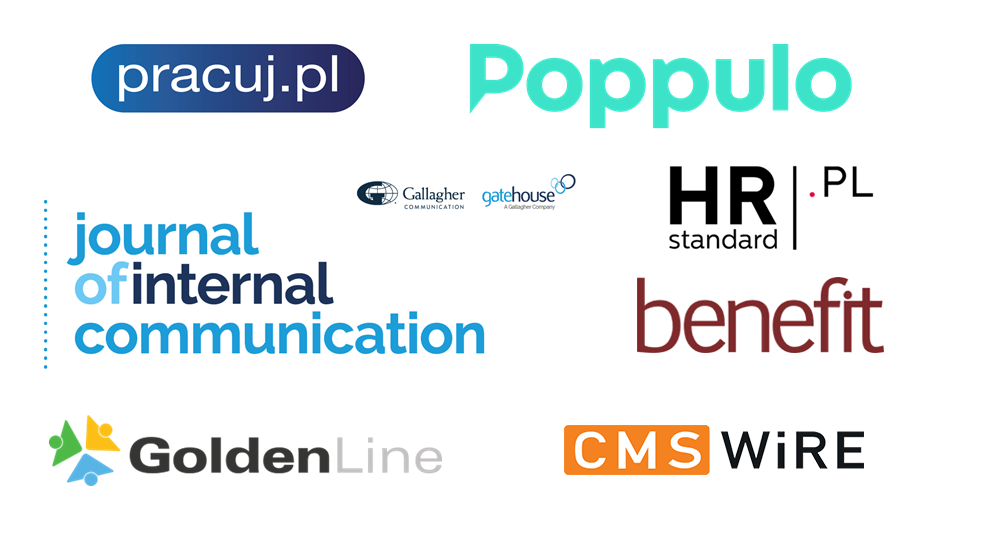

All occupations have their own tools. The same is with us – internal communication professionals. These tools help us organise our work better and plan our actions more efficiently. If we want the IC in our company to get to the next level, we need to start using them immediately. I see no other way.
It’s often easy for me to answer the question why the internal communication doesn’t work in a particular company as it should: there are no basic actions that should be taken or the actions are taken ad hoc without planning. There’s a lack of the analysis and planning, not to mention linking the IC work with the business goals.
If we want to call ourselves ‘professionals’, we need to use professional tools and think professionally about our work. What can help us? Below I shortly describe 5 essential tools to use in our IC work.
1. The communication plan – it’s a plan where we describe our actions to be conducted to communicate a project, an event or other issue we need to cope with. Analysing is an important element of a planning process. If we plan, we have time to analyse our future actions – contrary to the ad hoc actions, when there is no time for this element. Moreover, we can look deeply into the issue, consult it with others, there’s space for creativity, which is difficult to do while working under the time pressure, when more and more tasks appear on our to-do list.
In such an IC plan, we define what will be done and who will be responsible for that, which target groups are important for us, when we will implement it and why. We can’t forget about the metrics to assess if we reach our goals. On a daily basis, I use a few templates to create such plans. I analyse and share them during one of my IC trainings.
2. Personas or the audience matrix – taking into consideration a big number of templates and articles on the internet related to personas in the internal communication, employer branding, HR or marketing, creating this kind of audience characteristic shouldn’t be a problem.
But the results of the 2020 edition of the State of the Sector research (check the details) by the UK Gatehouse agency show there is a big problem. I really don’t understand why people who work in the IC and would like call themselves ‘professionals’ don’t use them. According to this research 82% of participants, don’t use such personas or the audience matrix. I believe they’re very busy at work every day, maybe even they’re overloaded, but I also understand why they said that some IC tools weren’t effective. These IC professinals make these tools ineffective because of their unprofessional attitude towards their work. To prepare personas or the audience matrix we need time. That’s all. There’s no magic and any rocket science in it. It’s the same with some other tools which I describe in this article. Time and willingness are crucial.
Having deep knowledge and understanding about our target groups is a basis. If we don’t know them or don’t know enough about them, our communications planning may be misleading. So before we start preparing another IC plan, we need to take time to describe our target groups (their comms style, favourite IC tools, their attitude towards communication, etc.).
3. The IC tools matrix – it’s another basic tool for our work. This matrix shows us all IC tools we have in use in our company. Having an audience matrix and an IC tools matrix, we may check, e.g. if the IC tools we have are correctly matched with the expectations of our employees. This IC tools matrix is a summary of pros and cons of all tools and analysis of their efficiency.
4. The IC research – it’s this kind of a tool I’m not able to work without. A good analysis of the starting points before creating an IC strategy or an IC plan is essential for me. Methods and tools we can use here vary. We can choose from quantitative research (questionnaires and statistics analysis), qualitative research (individual interviews and focus groups) and a SWOT analysis. The audience and the tools matrix mentioned above are also a kind of the analysis and should be used during the research.
5. The IC strategy – this important document describes the directions of all our IC action in the organisation and is created for a longer period of time than an IC plan. It’s also a place to analyse the IC audit results. Knowing what works and not in the communications, we can set proper goals and plan how to achieve them. Writing the strategy, we can’t forget about a very unpopular part of our work called an evaluation. I know it's not always easy, but it’s obligatory. This strategy also helps link our coomunication goals with the business goals of our company.
Find time for these essential tools. It’s really worth doing such analyses in a group to get useful insights from others and not be focused on your ideas only.
******
Join me on:
• Facebook @behindtheicscenes
• Twitter @maja_biernacka
• LinkedIn
Photo: Pexels.com





